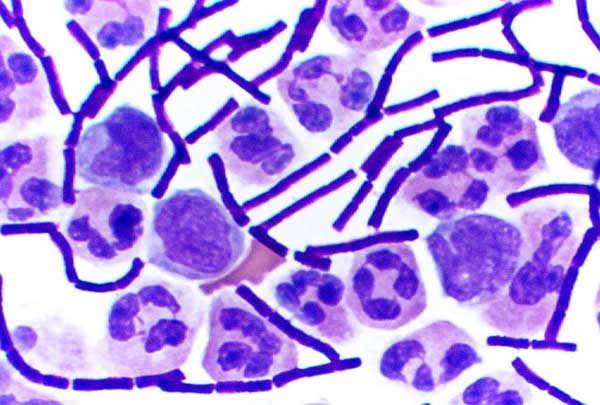|
Actinotignum Schaalii
''Actinotignum schaalii'' is a bacterium first isolated from human blood cultures. Its type strain is CCUG 27420. It is a Gram-positive, facultative anaerobic coccoid rod, considered a human pathogen. References Further reading *Bank, Steffen, et al.Actinobaculum schaalii, a common uropathogen in elderly patients, Denmark. Emerging infectious diseases 16.1 (2010): 76. * External linksLPSN* Actinomycetales Bacteria described in 1997 {{actinobacteria-stub ... [...More Info...] [...Related Items...] OR: [Wikipedia] [Google] [Baidu] |
Gram-positive
In bacteriology, gram-positive bacteria are bacteria that give a positive result in the Gram stain test, which is traditionally used to quickly classify bacteria into two broad categories according to their type of cell wall. Gram-positive bacteria take up the crystal violet stain used in the test, and then appear to be purple-coloured when seen through an optical microscope. This is because the thick peptidoglycan layer in the bacterial cell wall retains the stain after it is washed away from the rest of the sample, in the decolorization stage of the test. Conversely, gram-negative bacteria cannot retain the violet stain after the decolorization step; alcohol used in this stage degrades the outer membrane of gram-negative cells, making the cell wall more porous and incapable of retaining the crystal violet stain. Their peptidoglycan layer is much thinner and sandwiched between an inner cell membrane and a bacterial outer membrane, causing them to take up the counterstain ... [...More Info...] [...Related Items...] OR: [Wikipedia] [Google] [Baidu] |
Actinomycetales
The Actinomycetales is an order of Actinomycetota. A member of the order is often called an actinomycete. Actinomycetales are generally gram-positive and anaerobic and have mycelia in a filamentous and branching growth pattern. Some actinomycetes can form rod- or coccoid-shaped forms, while others can form spores on aerial hyphae. Actinomycetales bacteria can be infected by bacteriophages, which are called actinophages. Actinomycetales can range from harmless bacteria to pathogens with resistance to antibiotics. Reproduction Actinomycetales have 2 main forms of reproduction: spore formation and hyphae fragmentation. During reproduction, Actinomycetales can form conidiophores, sporangiospores, and oidiospores. In reproducing through hyphae fragmentation, the hyphae formed by Actinomycetales can be a fifth to half the size of fungal hyphae, and bear long spore chains. Presence and associations Actinomycetales can be found mostly in soil and decaying organic matter, as well as in ... [...More Info...] [...Related Items...] OR: [Wikipedia] [Google] [Baidu] |
